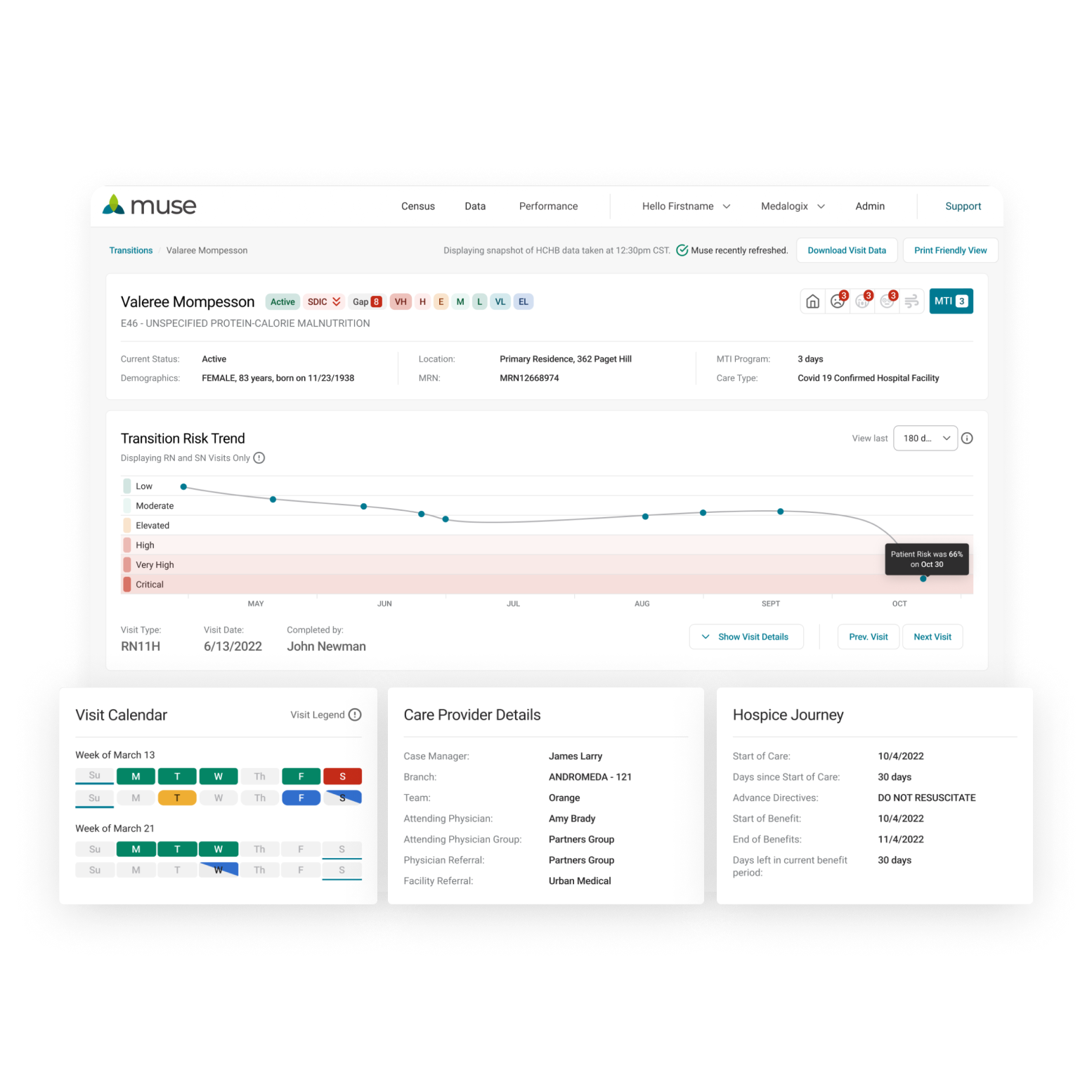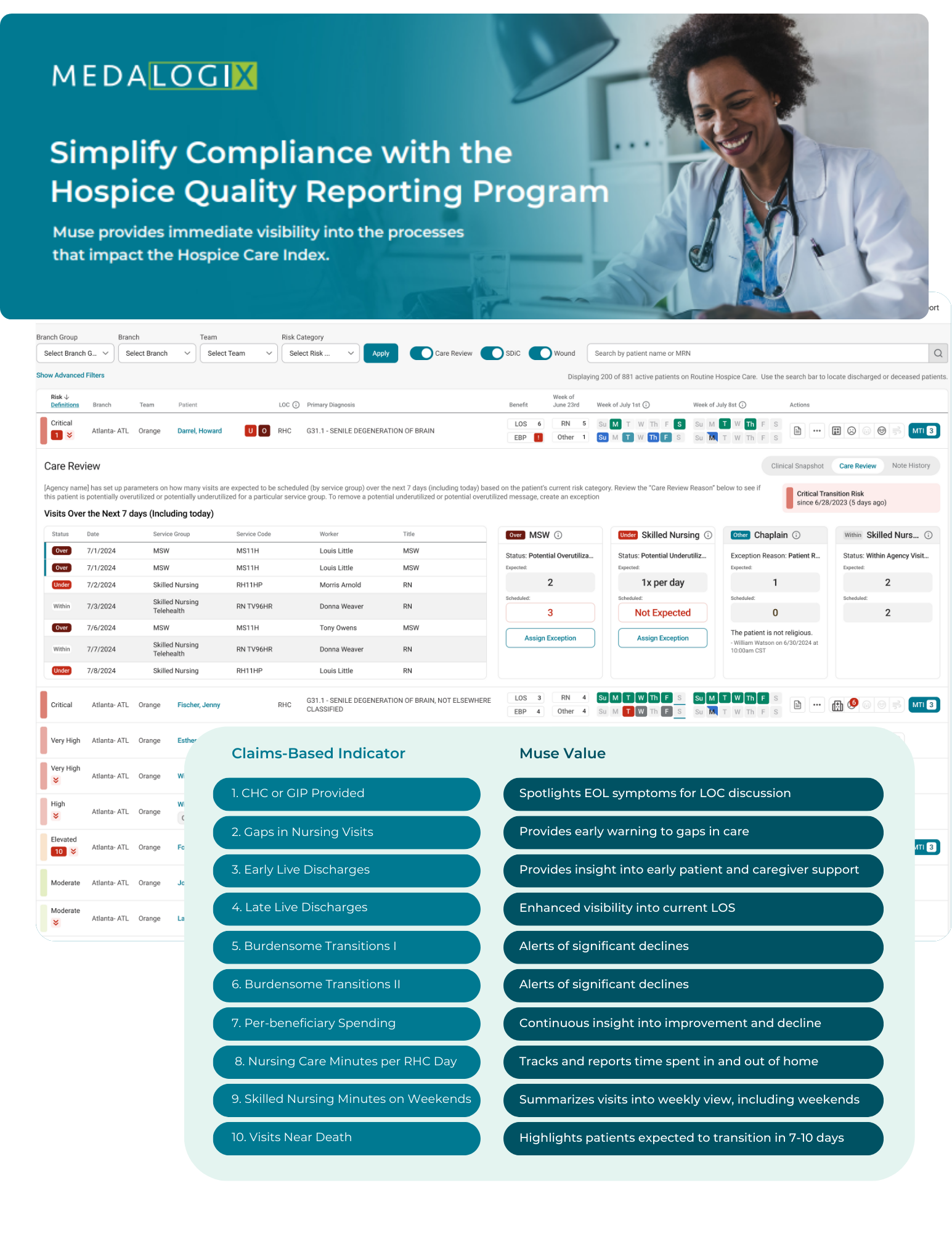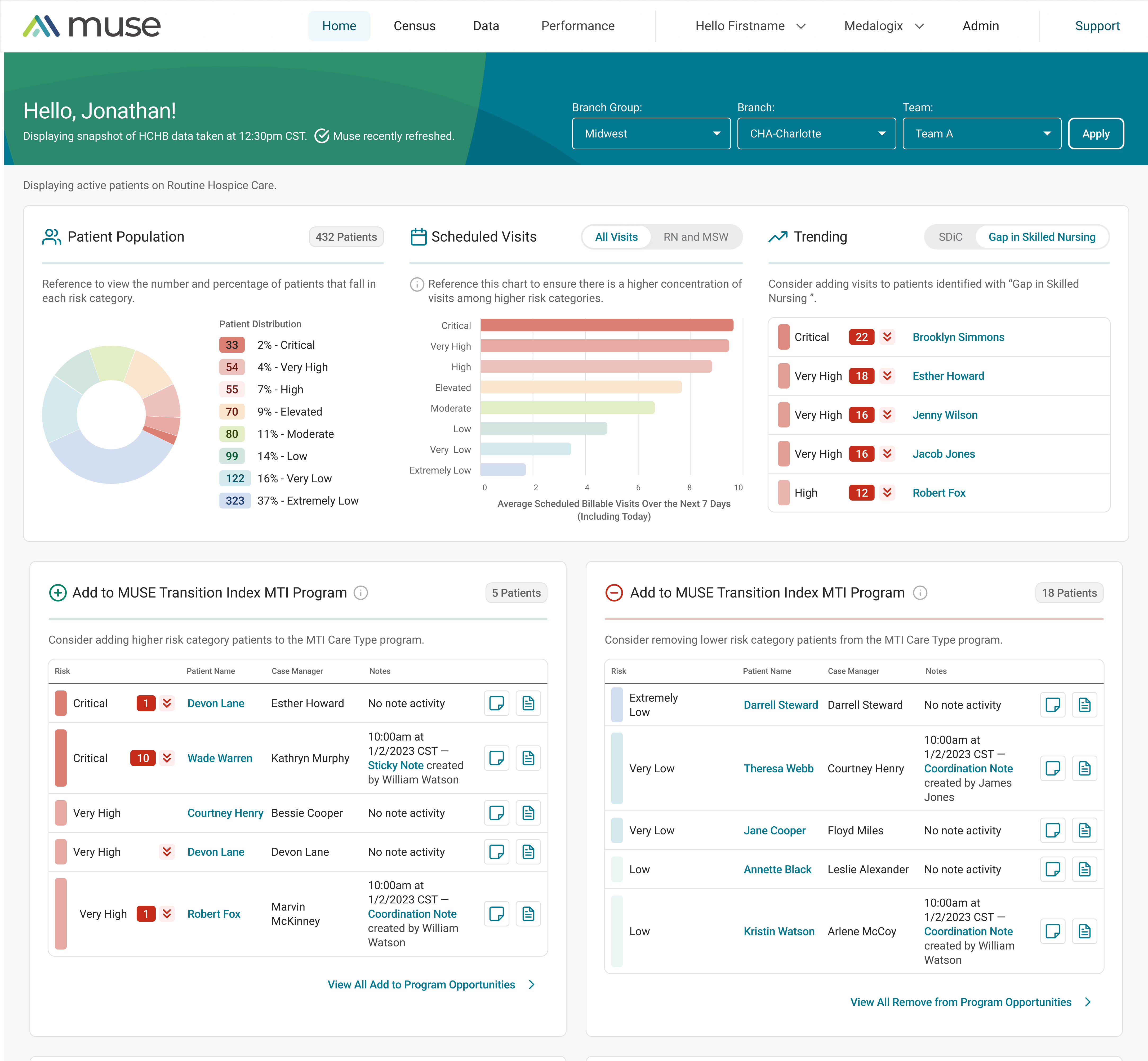Right-sized care when it matters most.
Patients, families, and caregivers should have the best end-of-life care experience possible. Unfortunately, existing solutions come up short in ensuring the right resources are deployed at the right time.
Powered by breakthrough data science, Muse intelligently analyzes clinical evidence to identify patient needs and risk levels, visit by visit. Diving deep into patient records, Muse considers the full patient picture to bring care teams smart recommendations based on the latest data. This drives care aligned to every patient’s risk and needs for optimized utilization and improved quality outcomes.
A Revolutionary Solution to Allocate Resources for the Greatest Impact
Muse helps ensure patients and their families receive optimal care – especially in their time of greatest need. Predictive analytics empower clinicians with the clinical evidence they need to make better, more timely care decisions:
More Data = Stronger
Predictive Models
Muse dives deep into both structured and unstructured patient data, comparing clinical evidence against a robust data set to suggest necessary changes and give care teams the insights they need to act.
Compares individual patient data to more than 60,000 active hospice patients on the Muse platform, as well as millions of records and visits from deceased patients.
At-a-glance, actionable user interface presents key insights to drive right-sized care, rooted in clinical evidence from the EMR like patient risk, trajectory, and other key data.
Consistently up-to-date recommendations that refresh with every visit for insights based on the latest patient data and more informed care planning.
The Muse homepage was designed to streamline clinician workflow and reduce training burdens through quick insights and curated patient lists.
Muse is a revolutionary resource management solution
…specifically designed for hospice providers, applying machine learning to inform individualized patient care on a visit-by-visit basis during the end-of-life trajectory.
Muse capitalizes on comprehensive patient data
…captured by clinicians to objectively surface patient risk, identify patterns, and surface subtle trends or signs of significant decline, employing a power that clinician eyes alone cannot.
Muse effectively enables patient-centered care
…by providing better visibility into resourcing, staffing, decision making, and care planning for end-of-life care. Customizable visit goals ensure care aligned to patient acuity and an agency’s census composition.
Proven, Real-world Success for Clients

“First thing each morning, Avow staff logs into Muse to see a risk- stratified list of their patients, and adjusts their day based on the patient specific needs.”
– Rebecca Gatian, Chief Clinical Officer, Avow
Our Expertise
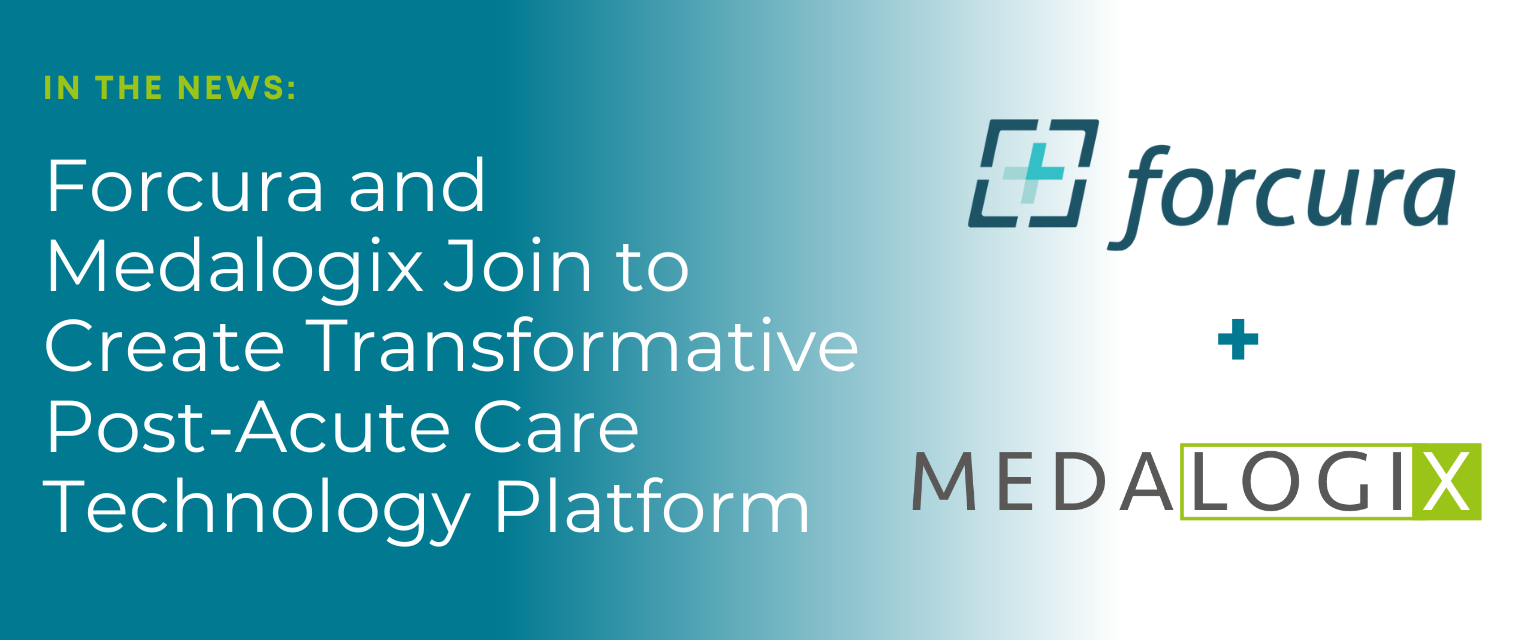
Forcura and Medalogix Join to Create Transformative Post-Acute Care Technology Platform
Berkshire Partners Will Serve as Lead Investor in the New Platform, with…

Navigating Homecare’s Persistent Challenges with Technology-Driven Solutions
Authored by: Amanda Fabozzi, PT, DPT, Director of Clinical Services …
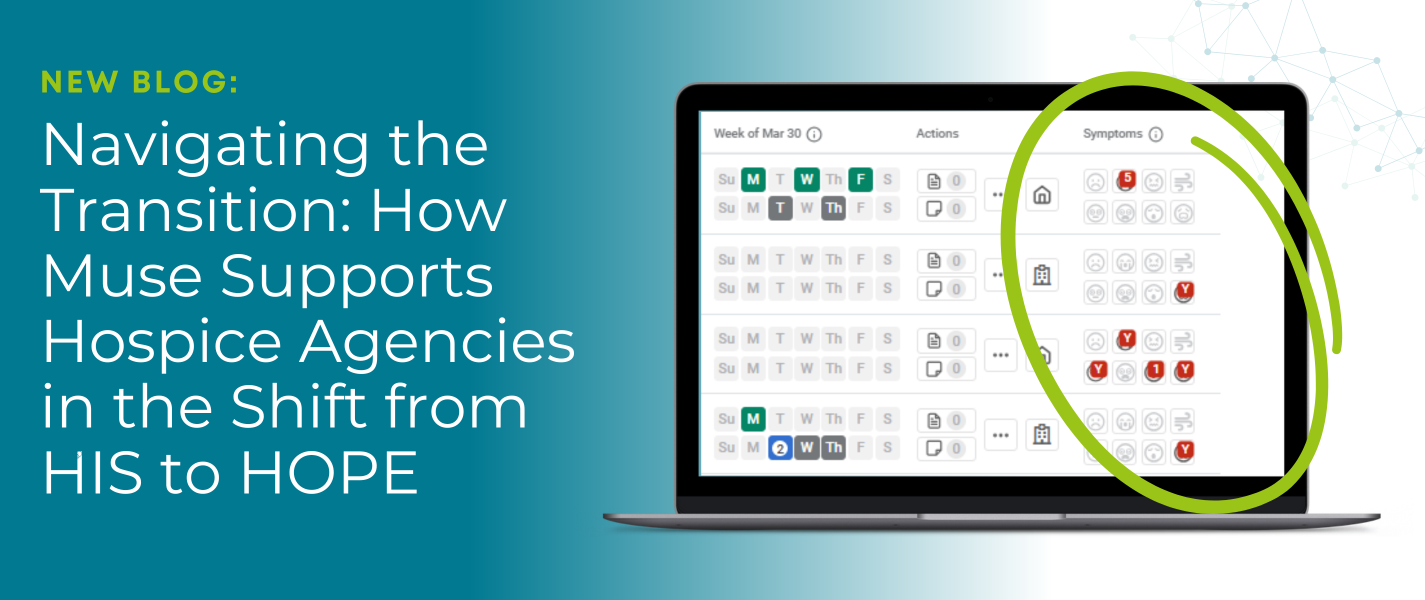
Navigating the Transition: How Medalogix Muse Supports Hospice Agencies in the Shift from HIS to HOPE
Authored by: Steven Shelton, MBA, MSN, RN, CHPN; Senior Director, Clinic…
Schedule a Demo
"*" indicates required fields
